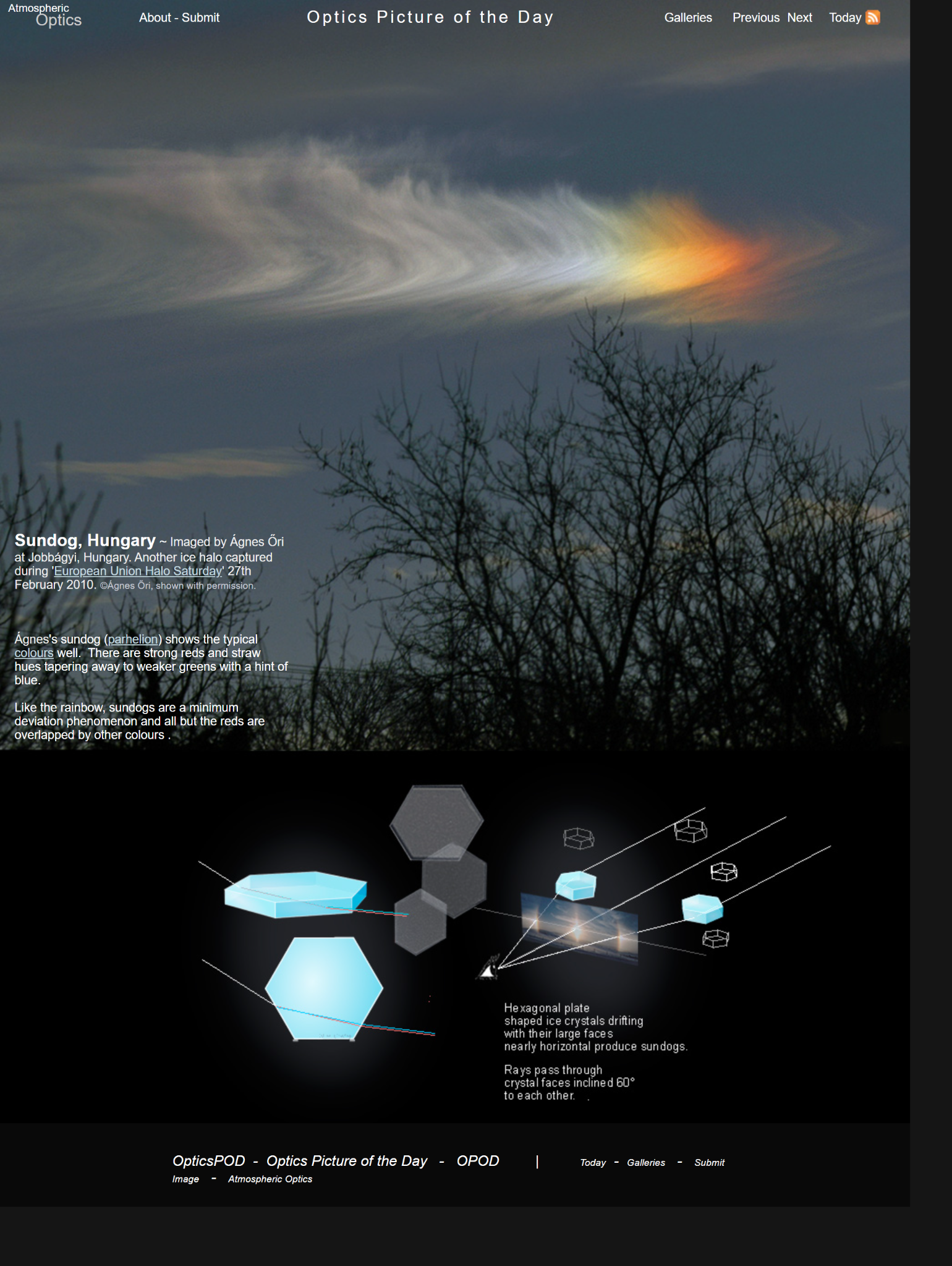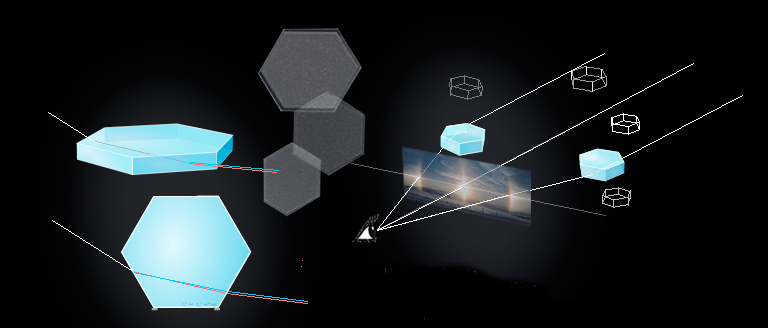Sundog
Sundogs: A Phenomenon of Ice Crystals and Light
Have you ever gazed at the sky and noticed a pair of glowing spots on either side of the Sun? These fascinating optical phenomena are known as sundogs, or parhelia. Similar to rainbows, sundogs are a result of light interacting with ice crystals in the atmosphere. While the existing content provides a brief overview of sundogs, let's dive deeper into this captivating atmospheric display.
The Colors of Sundogs
When observing a sundog, you may notice a striking array of colors. Sundogs often exhibit strong red and straw hues, gradually transitioning into weaker greens with a hint of blue. These colors arise from the scattering and bending of sunlight as it passes through ice crystals suspended in the air. The specific angles at which the light interacts with the crystals determine the color distribution within the sundog.
Ice Crystals and Sundogs
Sundogs owe their existence to hexagonal plate-shaped ice crystals that float in the atmosphere with their large faces nearly horizontal. As sunlight passes through these crystals, it undergoes refraction and reflection, resulting in the formation of sundogs. The rays of light pass through crystal faces inclined at approximately 60 degrees to each other, leading to the distinctive appearance of sundogs on either side of the Sun.
Minimum Deviation Phenomenon
Both rainbows and sundogs are classified as minimum deviation phenomena. This means that the light rays undergo minimal bending or deviation as they pass through the ice crystals. However, unlike rainbows, where light is refracted and reflected within raindrops, sundogs are formed by the interaction of light with ice crystals. This distinction contributes to the unique characteristics and appearance of sundogs.
Overlapping Colors
While sundogs display a vibrant range of colors, all but the red hues are often overlapped by other colors. This occurs due to the complex interplay of light and the hexagonal ice crystals. As the light passes through the crystals, it refracts and disperses, resulting in the overlapping colors within the sundog. The intricate nature of this phenomenon adds to the allure and complexity of observing sundogs in the sky.
A Fascinating Halo Saturday
On February 27th, 2010, Ágnes Őri, an avid sky watcher from Hungary, captured a breathtaking image of a sundog during the "European Union Halo Saturday." This event provided a unique opportunity for sky enthusiasts to document and share their observations of atmospheric halos, including sundogs. Ágnes's photograph beautifully showcases the typical colors and structure of a sundog, with its vivid reds and straw hues tapering into greens and hints of blue.
Exploring Sundogs Further
If you find yourself captivated by the enchanting beauty of sundogs, there is much more to discover about these optical phenomena. Scientists and researchers continue to study and analyze sundogs to gain a deeper understanding of their formation and characteristics. By investigating the intricate relationship between light, ice crystals, and atmospheric conditions, we can unravel the secrets behind the mesmerizing displays that grace our skies.
The Atmospheric Optics Website
For further exploration of sundogs and other atmospheric optical phenomena, the Atmospheric Optics website is an invaluable resource. It offers a wealth of information, images, and explanations, providing a comprehensive understanding of these natural wonders. Delve into the intricacies of sundogs and immerse yourself in the world of atmospheric optics through this fascinating online platform.
Conclusion
Sundogs are captivating optical phenomena that occur when sunlight interacts with hexagonal ice crystals suspended in the atmosphere. Their vivid colors and distinctive appearance make them a sight to behold. By understanding the science behind sundogs, we can appreciate the intricate play of light and ice in our skies. So, next time you spot a pair of glowing spots on either side of the Sun, take a moment to marvel at the beauty of sundogs and the wonders of our atmosphere.

Sundog, Hungary ~ Imaged by Ágnes Őri at Jobbágyi, Hungary. Another ice halo captured during 'European Union Halo Saturday' 27th February 2010. ©Ágnes Őri, shown with permission.
Ágnes's sundog (parhelion) shows the typical colours well. There are strong reds and straw hues tapering away to weaker greens with a hint of blue.
Like the rainbow, sundogs are a minimum deviation phenomenon and all but the reds are overlapped by other colours .

Hexagonal plate shaped ice crystals drifting with their large faces nearly horizontal produce sundogs.
Rays pass through crystal faces inclined 60° to each other.
Note: this article has been automatically converted from the old site and may not appear as intended. You can find the original article here.
Reference Atmospheric Optics
If you use any of the definitions, information, or data presented on Atmospheric Optics, please copy the link or reference below to properly credit us as the reference source. Thank you!
-
<a href="https://atoptics.co.uk/blog/sundog-2/">Sundog</a>
-
"Sundog". Atmospheric Optics. Accessed on November 26, 2024. https://atoptics.co.uk/blog/sundog-2/.
-
"Sundog". Atmospheric Optics, https://atoptics.co.uk/blog/sundog-2/. Accessed 26 November, 2024
-
Sundog. Atmospheric Optics. Retrieved from https://atoptics.co.uk/blog/sundog-2/.